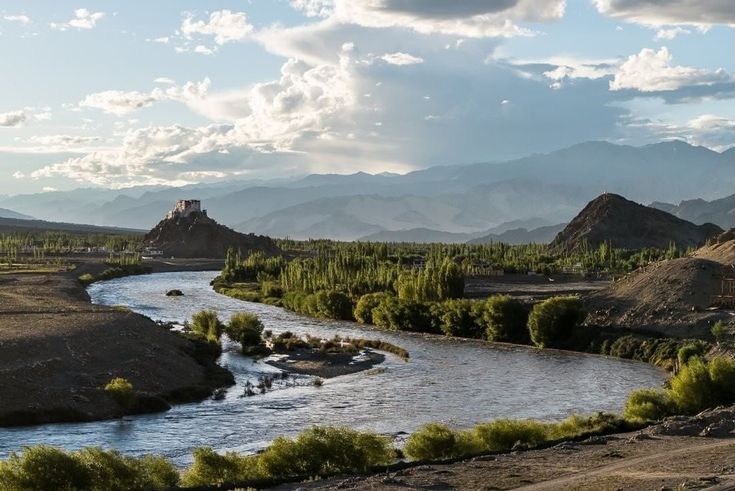When the River Remembers More Than We Do
By Elena Marlowe
Prelude — The Breath Beneath the Mountains
The Source at Senge Zangbo: Where Snow Becomes Story
The morning the wind first spoke to me in Ladakh, I was standing above a pale braid of water that the maps call the Indus River. Up here the air is alpine-clear, and what it withholds in warmth it returns in precision: the glint of mica, the grammar of ice, the slow annunciation of a current being born. The source is rarely a single point. It is a chorus—snowfields, trickles, rivulets—gathering themselves near Mount Kailash, where Senge Zangbo and Gar Tsangpo lean toward each other, where meltwater rehearses the sentence it will speak for thousands of kilometers. “Sindhu,” say the old texts, a word that once carried the meaning of an ocean and later the intimacy of a river. From that syllable, identities were quarried: India, Hindu—names that would travel far beyond the valley yet keep the cadence of this water. The Indus River does not hurry. It learns you first: your breathing, your doubt, the exact weight of your footsteps on gravel. The banks keep a ledger—hoofprints of ungulates, monk’s sandals, the polymer sadness of a plastic bag. Even at its adolescence in Ladakh, the river draws its lineage across epochs, a living inheritance wrote by glaciers. To stand here is to witness snow becoming sentence and geography becoming memory. I think of rivers as long biographies written by mountains, and every biography begins with a childhood scene: a light, a shiver, a first decision to move. The Indus River chooses patiently. It chooses a bed of stones that will translate it, villages that will name it, travelers who will misunderstand it and then slowly learn. It chooses time as its only true companion, and time answers by smoothing every stone into a vow.
Rivers as Memory: From the Tethys Sea to Time
Before there was a valley, there was a sea. The Tethys lay here, a quiet intelligence of salt and silence. Now the seabed has been lifted into scripture, and the ridgelines of Ladakh read like a psalm scored by tectonic patience. Fossils appear like commas in stone, reminders that the planet also keeps a diary and that the Indus River is one of its margins, annotated in silt and flood. If memory is a country, water is its citizen—perpetually traveling, perpetually returning. The Indus River carries the afterthoughts of monsoon and glacier; it speaks fluently in braid channels and eddies, in a lexicon of sand bars and oxbows. We build stories beside it because the river is already a story, braiding myth and geology into a single, believable current. Somewhere between Harappa’s fired bricks and Ladakh’s sunburnt prayer flags, the river learned the double work of nurturing and erasing: giving silt to crops, taking away the exact contour of yesterday’s bank. To call it a “lifeline” is accurate, but too tidy. A lifeline implies rescue; the Indus River does something more enduring. It tutors us in change. I have watched the afternoon light unspool across its surface like silk, and in that sheen there were caravans, empires, treaties, and the shy courage of a novice raft guide learning the line of a rapid. Time is not a straight path; rivers remind us. They fold and refold the landscape until memory is not an archive but a verb. The Indus River is the verb: to continue.
Currents of Civilization
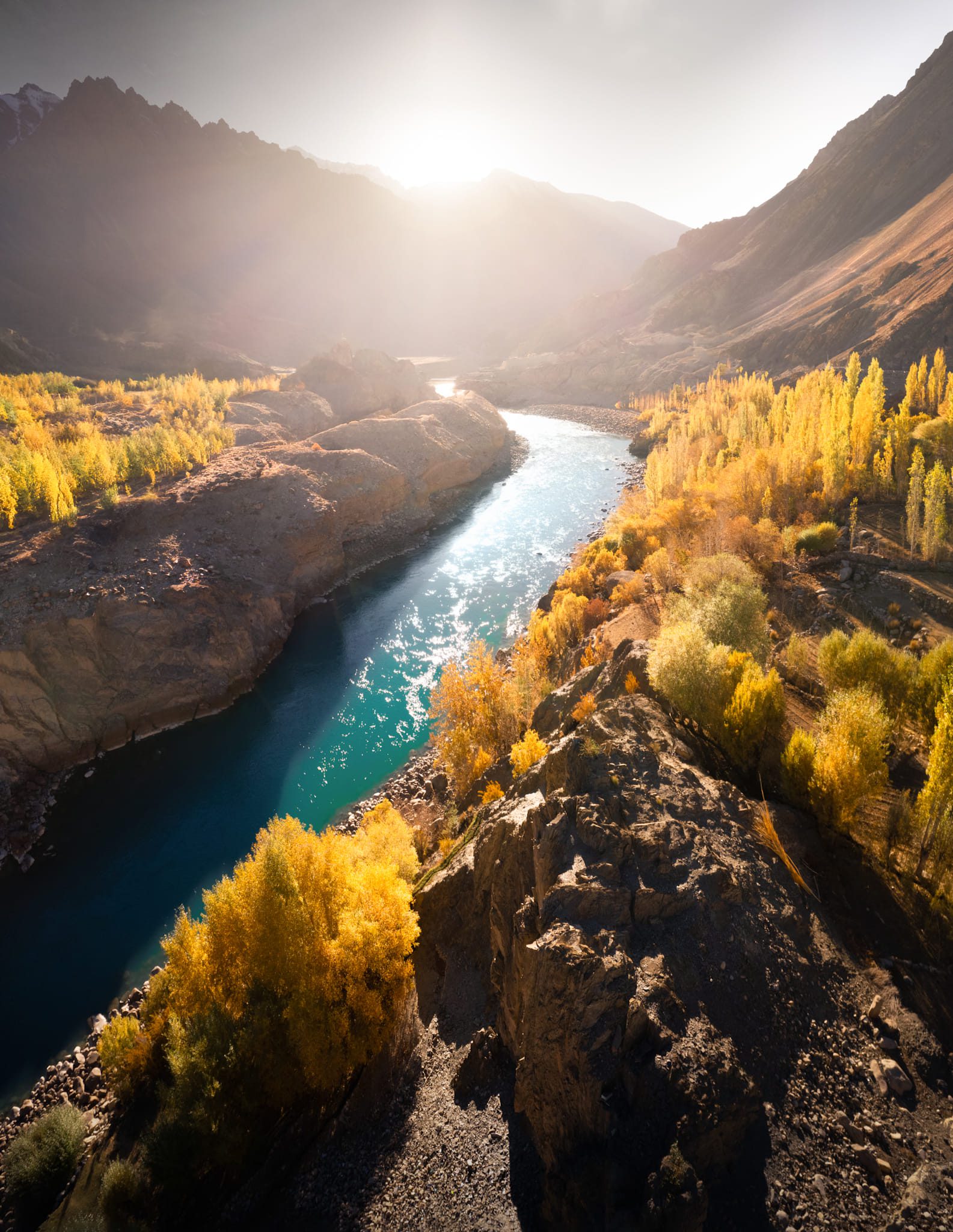
When the City Listened to the River
In the archaeology of the Indus River valley, the most radical idea was not a monument but a system: water channeled, drains aligned, streets laid with the audacity of order. Harappa and Mohenjo-daro were cities that heard the river’s meter and answered in brick. Stepwells rehearsed the logic of seasons; warehouses believed in tomorrow. It is tempting to say the Indus Valley Civilization rose because of the Indus River, yet the relationship was more conversational than causal. The river proposed, the city responded. Trade rode its back like a quiet certainty—shells, lapis, grain, ideas—slipping along the basin toward distant ports. Each kiln-fired brick is a syllable, each street a syntax. A civilization is not only what it builds; it is what it is willing to maintain. The Indus River taught maintenance. Silt demanded it. Flood demanded it. Dry years demanded it. To live here was to learn proportion: how much to take, how much to leave, how to let the river remain itself while allowing people to remain themselves beside it. In museum cases, the artifacts look small: a seal, a pot, a toy cart with wheels that still turn under a curator’s careful hand. Yet each object is a testimonial to listening, and the listener is the Indus River. Modern planners praise “resilience”; the ancients practiced it, quietly as a morning chore. When I walk a contemporary canal drawn from the basin, I think of those unnamed engineers, of how their patience flows into our present like a tributary. The ruins are not an ending. They are a watermark the Indus River left on time.
The River that Named a Country
Names are rafts we push into history and hope they do not capsize. “Sindhu” moved through languages—Old Persian, Greek, Latin—shedding and gathering letters until “Indus” reached European maps and “India” reached the tongues that would speak of a subcontinent. The Indus River did not ask for this responsibility, but it shouldered it with the indifferent grace of water that has other work to do. Identity gathered along its banks like morning markets: languages, gods, rituals, a grammar of grain and ritual bathing. To say that the Indus River named a country is a poetic truth; to say the country named the river is another. Both are accurate in the way two banks hold one current. As travelers, we often search for origins as if they were keys that will unlock the whole house. But the Indus River teaches that meaning is migratory. The same water that feeds a Ladakhi field will later turn a turbine, then touch a delta reed while a heron corrects its posture to spear a fish. Meanwhile, on a train or in a policy room, the word “Indus” will be a shorthand for territory, rights, and the uneasy arithmetic of power. Words, like rivers, collect silt. They grow heavier and more necessary at once. In villages, I have seen elders speak “Sindhu” with a softness that sounded like a blessing, and schoolchildren pronounce “Indus River” with textbook precision. Between them flows a country, plural as light on water, held together by a name that keeps remembering more than we do.
Between Empires and Agreements
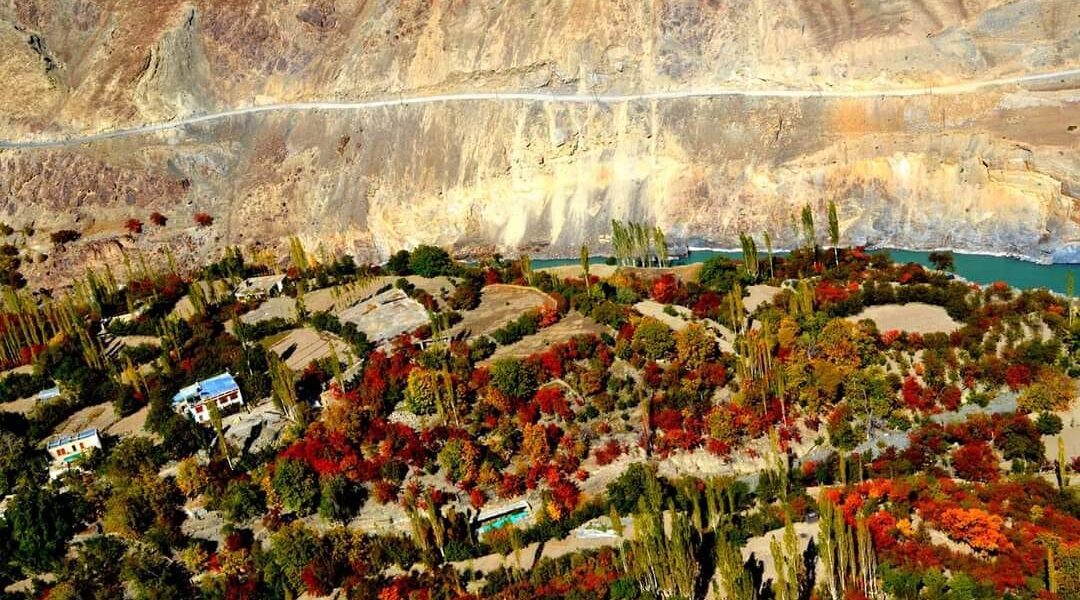
The Indus as Border and Bridge
Cartographers adore rivers because they draw such convincing lines. Yet the Indus River excels at contradicting any line that pretends to be final. From mountain corridors to plains, its course has been a boundary and a bridge, a pretext and a possibility. Modern history tasked it with diplomacy. The Indus Water Treaty—a phrase that can feel bureaucratic until you remember it is, in essence, a choreography of seasons—has endured wars and droughts precisely because rivers teach endurance. It is one of those rare documents in which pragmatism feels like hope. To share a river is to admit an ecology greater than ideology; to count its cubic meters is to confess that numbers can keep peace where flags sometimes cannot. The Indus River does not perform neutrality; it performs continuity. Standing at a barrage, I watch gates rise and fall like measured breaths. Agriculture depends on those breaths. So does energy. So do households where stainless cups clink at dawn as tea is poured. In such moments, geopolitics descends from its abstract altitude and becomes domestic: a pump working, a field greening, a child washing dust from his hands before school. I do not romanticize the treaty. It is challenged, debated, occasionally frayed. But I also do not romanticize conflict. Water outlasts both. The Indus River, threaded through legislation and livelihood, reminds me that a border is a temporary agreement on where to draw a pencil, while a bridge is a decision to keep moving.
Engineering a Civilization’s Lifeline
If the Bronze Age inscribed intelligence in brick, the modern age carved it in concrete and earthfill. Tarbela Dam rises like a patient argument with gravity, and barrages along the Indus River gather the current into useful sentences: irrigation, flood moderation, electricity. The Indus Basin Irrigation System is often called the world’s largest continuous network. Yet standing beside a canal at dusk, watching dragonflies write cursive over water, “largest” feels like the wrong adjective. “Interdependent” might be better. Fields of wheat in one province lean on snowmelt in another; a turbine’s hum upstream can be the difference between lamp and dark downstream. We have learned to steer the Indus River in channels as if steering were the same as knowing. Engineering is a kind of vow—sometimes kept, sometimes broken by flood, silt, or the unanticipated mathematics of climate. I am grateful for the ambition that built these structures and cautious of the illusion that structures are final. Water remembers before we do. It remembers old floodplains and attempts to return, politely some years, fiercely in others. To honor the river is not to keep it wild or to keep it caged; it is to keep it legible. On a catwalk above sluice gates, I listened to the machinery translate current into measurement. On the bank nearby, a farmer’s child skipped stones, translating measurement back into wonder. Between those translations the Indus River survives, and so, perhaps, do we.
Echoes of the Present — Ladakh’s Indus
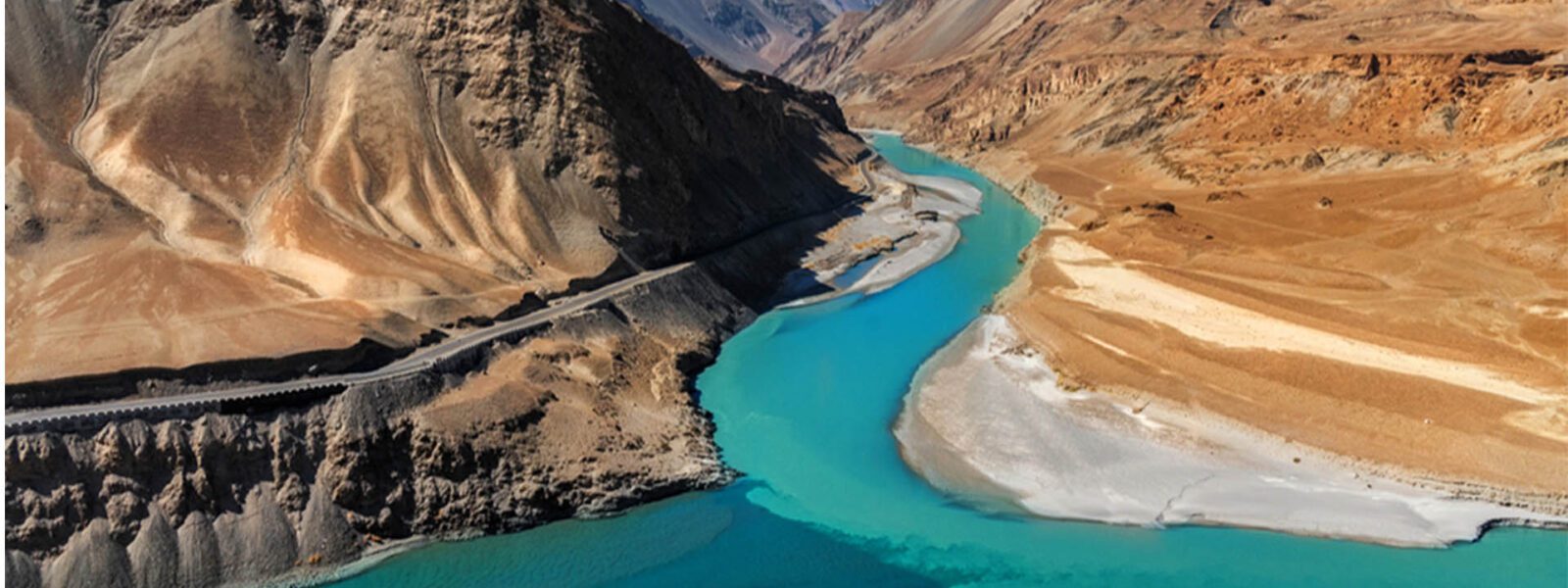
Where the Zanskar Meets the Indus
At Nimmu, the world rehearses its favorite metaphor: two colors of water joining like two chapters of a single book. The Zanskar comes in austere and cool-toned; the Indus River meets it with a warmer cast, tea-brown and deliberate. From the road, the confluence looks like a marriage; from the bank, it sounds like a negotiation. The current tucks itself around boulders, braids briefly, then understands which direction has more future in it. Rafts nose into the flow where guides read the script of rocks, eddies, and lines that only exist once and then are gone. Above, prayer flags teach the wind new verbs; below, sediment teaches the water old nouns. A confluence is a simple fact in geography and a complicated truth in culture. Traders once camped near here, the night punctuated by the low conversation of animals and the high consolation of stars. Today, visitors stand where they once did, trying to photograph a paradox: the precise moment when two become one. The Indus River continues as if to say, “Oneness is not a single shade; it is a movement.” In the monastery at Alchi, wooden saints keep a courtesan’s patience with those who gaze too quickly. I think of them when I watch the confluence. The lesson is the same. Look longer. Understand that change is not a betrayal of identity but the completion of it. If you stay until evening, the water mirrors a skyscape of violet and ember. Then you see it clearly: the Indus River is not just water; it is the choreography of attention.
The Sindhu Darshan Festival and the Living Faith
Once a year, the banks near Leh become a liturgy. The Sindhu Darshan Festival gathers pilgrims, artists, soldiers, students—anyone who wishes to honor the river that underwrote so much of the subcontinent’s story. Drums remember what calendars forget; lamps shuttle their small constellations over the Indus River, each flame a local hope with continental context. Festivals can be postcards if you treat them hurriedly. But if you stay, if you ask an elder why a song modulates the way it does or why a prayer needs water to be complete, the day enlarges. The festival is not an escape from modernity; it is a rehearsal for community within it. I have stood with women who tie threads on a twig and hand it to the current with the practical tenderness of farmers checking weather. I have listened to a schoolboy explain how the word “Sindhu” feels like a root and the phrase “Indus River” feels like a route, and that perhaps we need both. Ritual is not fossilized time; it is time learning to speak aloud without breaking. The Indus River responds in its native language of motion. Even the quietest lamplight shakes a little in the breeze, as if acknowledging the inevitability of change. When the lamps pass a soldier’s boots, I remember that this water also touches contested ground, and that faith, like water, does not respect lines so much as it respects gravity. To honor the Indus River here is to practice a modest peace: attention, gratitude, participation.
Listening to the River at Dusk
By dusk the valley exhales. The wind loses its edge; the Indus River keeps its sentence. Monks file out of prayer halls, the last syllables of chant still suspended like incense over courtyards. A woman rinses copper pots; a boy experiments with a slingshot and misses on purpose so birds won’t scatter. I sit on a rock that looks like a deliberate seat and try a practice I learned from a geologist: hear the water without watching it. The ear discovers different truths than the eye. There are measures within measures—riffle, glide, the soft percussion of gravel rolling a few centimeters downstream. To listen is to understand that the Indus River carries many futures at once: the promise of tomorrow’s irrigation, the risk of a late-summer flood, the enduring right of fish to be inscrutable. Dusk is when philosophy gently agrees to wear work clothes. I think of treaties and turbines and how they translate water into policy and light. I think of elders who know which bank to trust in which month and of travelers who learn humility by having their itinerary reworded by weather. An egret takes a practice flight, finds the air adequate, and settles again. The first star becomes a sentence-ending dot. If I had to make one vow on this bank, it would be simple: to keep the Indus River legible—to children learning to name it, to planners learning to protect it, to pilgrims learning to praise it without owning it. Night arrives like ink, and the sentence continues.
The River’s Tomorrow
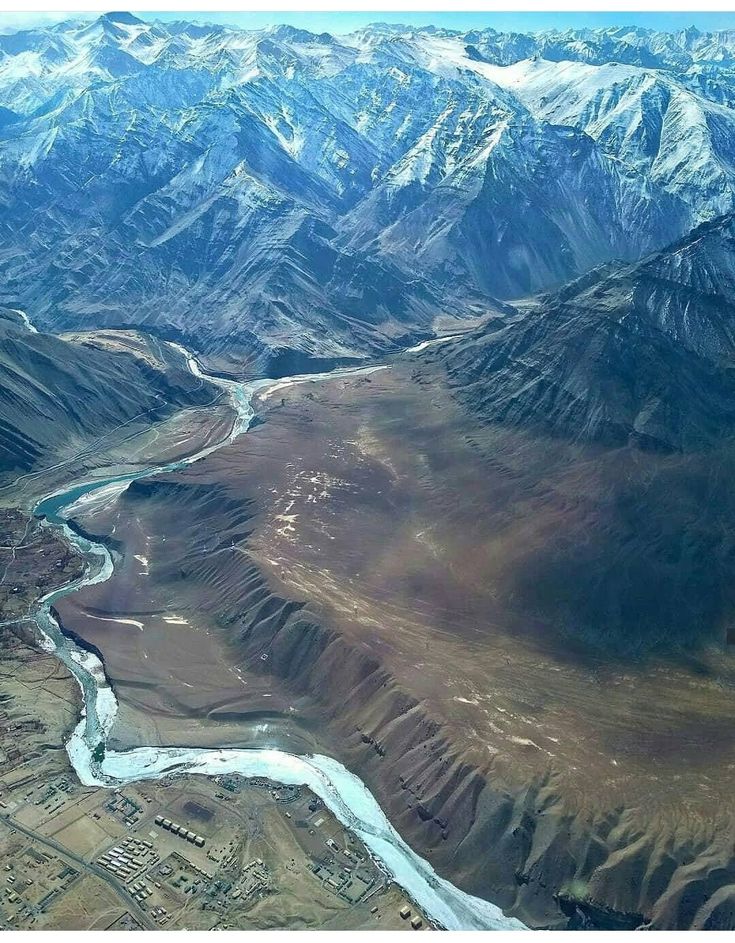
Glaciers, Floods, and Fragile Futures
In the grammar of the Indus River, glaciers are the nouns, and monsoon is the verb. Warming shifts the tense. What once released slowly now hurries; what lingered as snowpack appears prematurely as surge. Downstream, this becomes a parable of too much and too little: flood damage one year, brittle canals the next. Climate models feel clinical until you walk a bank where someone points to a watermark that was a roofline last season. The Indus River has always negotiated extremes; what is new is the shrinking middle—the manageable ordinary—where farmers could wager their work on predictability. A friend in hydrology tells me that resilience is not a fortress; it is a series of good bridges. Early warning, sensible zoning, silt management, aquifer recharge—these are unspectacular phrases that save lives. The river’s tomorrow also depends on our appetite for carefulness. We often praise heroism; rivers reward maintenance. In Ladakh, communities speak of springs altering their moods, of grasslands forgetting former greenness, of cloudbursts remembering new habits. To write about the Indus River is to write a letter to the future that our present is already reading. We cannot subtract uncertainty, but we can teach it better manners: by listening to data, by designing with humility, by keeping old knowledge within reach. The Indus River will go on speaking. Whether we go on hearing is the open question that should keep us generous.
The Dolphin That Forgot the Sea
In the silt-brown pages of the Indus River, there is a rare word: a dolphin that long ago left the sea and learned fresh water as a mother tongue. Platanista minor—small by name, large by implication. Its eyes are almost ceremonial, reduced to suggestion, which means it listens with the rest of its body. When I first learned this, I felt a kinship. Writers do something similar when light is insufficient: they learn to hear. The Indus River dolphin is endangered, which is another way of saying we have to decide whether our story includes it. Nets, barrages, pollution, altered flows—every human convenience has a shadow, and in that shadow lives this animal. Conservationists craft corridors of hope; communities begin to prefer patience over extraction; schoolchildren draw dolphins with the solemn optimism of those who have not yet learned to compromise with cynicism. A fisherman told me the river once had more secrets and fewer plastics. He wasn’t angry; he was precise. Precision is love’s older sibling. The future of the Indus River dolphin will not be secured by anger alone but by a sequence of accurate kindnesses: cleaner effluent, smarter nets, responsive gates, time for science to be both rigorous and local. I sometimes imagine a dolphin surfacing at dusk, taking a breath that stitches its lineage to ours. We are both mammals who learned to navigate murky conditions. If the Indus River keeps the dolphin, it will also keep some tenderness for us.
Epilogue — The Pulse of the Indus
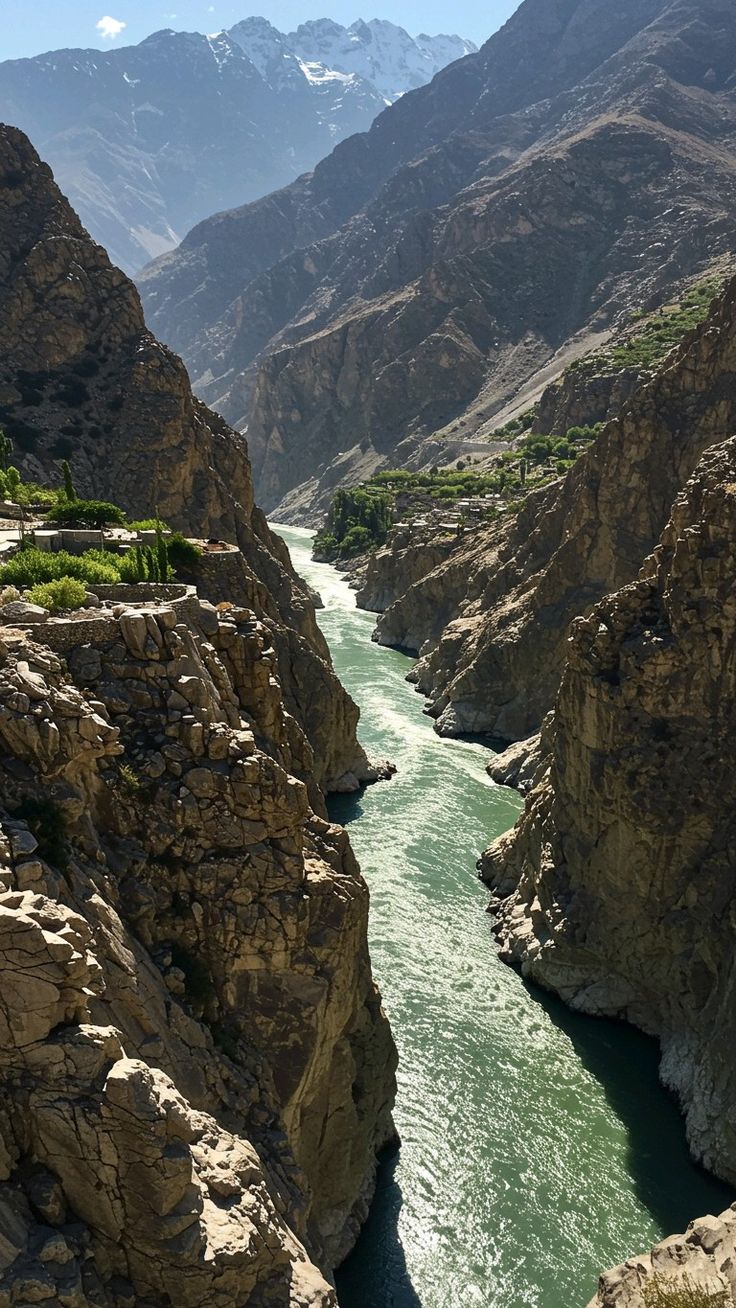
From Stone to Silence, From Source to Sea
Every river writes its own moral. The Indus River chooses not a triumphal ending but a continuity—snow to stream, stream to power, power to lamp, lamp to story, story to policy, policy to field, and back again. In Ladakh I touched its early sentence; in the plains I watched its paragraphs unwind; at the sea I tasted its final period and realized it was a gateway, not a stop. The Indus River is a teacher of proportion. It shows us how to be strong without shouting, how to be enduring without hardness, how to belong to a geography without asking it to be only ours. If I could gift the reader one sensation, it would be the cool certainty of mountain wind and the low, lucid sound of current wrapping a stone. In that sound is a civilization’s courage and a village’s morning, a treaty’s arithmetic and a child’s small astonishment at the way water obeys and disobeys in the same hour. I leave this river with the usual traveler’s polite regret and the unusual citizen’s deliberate hope. If we continue to keep it legible—to engineers and pilgrims, to farmers and poets—the Indus River will go on remembering us kindly.
The river carries our beginnings and our revisions. We owe it the courtesy of attention.
FAQ
Where does the Indus River start and where does it end?
The Indus River gathers from glacial and snowmelt sources on the Tibetan Plateau, especially near Mount Kailash where streams such as Senge Zangbo and Gar Tsangpo convene. It travels through Ladakh and into Pakistan, crossing plains and barrages, before dispersing through a broad delta into the Arabian Sea. Think of it as a sentence that begins in ice and concludes in salt.
Why is the Indus River historically important?
It hosted one of the world’s earliest urban experiments, the Indus Valley Civilization, where cities aligned their lives to water’s cadence through drains, reservoirs, and trade. Later, the river’s name shaped regional identity and national terminology. Its basin continues to feed millions, translate glacier into grain, and anchor negotiations that outlast political seasons.
How is the Indus River connected to Ladakh today?
In Ladakh, the Indus River is still an everyday presence—irrigating fields, shaping villages, and staging ceremonies like the Sindhu Darshan Festival. At Nimmu, it receives the Zanskar in a confluence beloved by visitors. It also offers measured adventure in rafting and an abiding education in how mountain geographies become human geographies.
What are the main environmental challenges for the Indus River?
Warming alters glacier behavior, creating seasons that swing between surplus and scarcity. Floodplain memories reassert themselves during extreme rains, and silt complicates infrastructure. Pollution and habitat fragmentation threaten biodiversity, including the endangered Indus River dolphin. Solutions require maintenance as much as innovation, and cooperation as much as technology.
What is the Indus Water Treaty and why does it matter?
It is a framework through which neighboring countries share and manage the Indus River system. Its endurance suggests that water management can be a durable language of peace. Beyond treaties, it reminds us that rivers resist binary thinking: they belong to landscapes first, and to smart agreements only insofar as those agreements respect that truth.
Where can travelers best experience the Indus River in Ladakh?
Stand at the confluence near Nimmu to watch colors braid, wander the monastery complexes that contemplate its presence, and visit riverbanks at dusk when wind softens and the current’s voice is clearest. Travel gently, with patience for altitude and reverence for the way the Indus River has already welcomed generations before ours.
Conclusion
The Indus River is not merely a subject; it is a structure—a way to think about time, identity, and reciprocity. In its valley, cities learned to keep house with water; on its banks, languages learned to rename the world. In Ladakh, the current remains a daily companion and a slow, luminous teacher. If we honor what the river asks—attentive design, careful sharing, and an affection for maintenance—we will have done more than conserve a resource. We will have kept faith with a biography that began in snow and still insists on grace.
Closing Note
Follow the Indus River long enough and you learn to recognize your own undertow: the pull toward meaning that refuses to fossilize. Walk the bank at dusk, listen without looking, and let a single ripple become a sentence that revises your idea of permanence. The river continues. May we be worthy of its memory.
About the Author
Elena Marlowe is the narrative voice behind Life on the Planet Ladakh, a storytelling collective exploring the silence, culture, and resilience of Himalayan life. Her work reflects a dialogue between inner landscapes and the high-altitude world of Ladakh.

